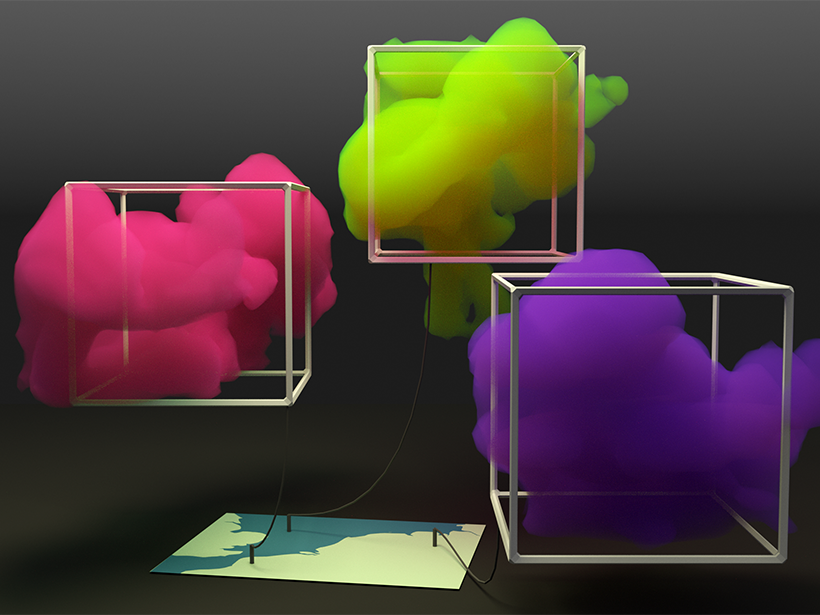Source: Journal of Advances in Modeling Earth Systems (JAMES)
Accurately representing clouds and convection in weather and climate models is one of the thornier challenges facing climate modelers. Cloud droplets form on micrometer scales, whereas convective updrafts and downdrafts, which play vital roles in cloud formation, can extend over distances of up to 10 kilometers.
Current global climate models operate with resolutions of 10–100 kilometers and thus cannot resolve these processes directly. Instead, cloud processes are represented with numeric approximations known as parameterizations. For example, climate models depict the transport of heat and moisture in a cloud using values that describe the rate and direction of movement of heat and moisture in the atmosphere. However, these approximations gloss over the dynamic, small-scale processes that drive cloud formation in reality, so the resulting representations of clouds in these parameterizations contain significant uncertainty.
This uncertainty with respect to clouds is the main source of uncertainty in model-based projections of future global warming; more clouds in a future climate will dampen global warming while fewer clouds will amplify the warming. Furthermore, uncertainty in cloud representations also contributes to systematic errors in simulated precipitation patterns.
In a recent study, Jansson et al. demonstrate a new approach to modeling clouds. The authors used a method known as superparameterization in which individual parameterizations are replaced by a smaller-scale and more accurate simulation of cloud processes in a global circulation model. Superparamaterizations have been applied before in global climate models, but new in this study is the use of three-dimensional, high-resolution large eddy simulations as the cloud-resolving model. The new technique also allows users to restrict the superparameterization to a given geographic area to control computational costs.
The authors implemented their procedure using the Dutch Atmospheric Large Eddy Simulation and the Open Integrated Forecast System (OpenIFS) and demonstrated the superparameterized setup by simulating conditions on an April day in 2012 over part of the Netherlands.
The model more accurately reproduced cloud top height measurements observed by the Moderate Resolution Imaging Spectroradiometer aboard the Terra satellite compared with the standard parameterized version of OpenIFS. The superparameterized model also showed improvements in representing specific humidity.
The results of the study indicate that superparameterization using large eddy simulations could improve the representation of clouds in global circulation models. Furthermore, the work provides a foundation for developing future parameterization approaches and the use of different local models.
However, the authors note that future work is needed to validate the approach fully and that there is room for improvement. For instance, the geographic area over which the superparameterized model can be applied is limited by computational restraints, and the model did not capture cloud structure well. Nevertheless, the demonstration cleared a significant technical hurdle and shows promise for future climate modeling efforts. (Journal of Advances in Modeling Earth Systems (JAMES), https://doi.org/10.1029/2018MS001600, 2019)
—Aaron Sidder, Freelance Writer
Citation:
Sidder, A. (2019), A “super” solution for modeling clouds, Eos, 100, https://doi.org/10.1029/2019EO132121. Published on 06 September 2019.
Text © 2019. The authors. CC BY-NC-ND 3.0
Except where otherwise noted, images are subject to copyright. Any reuse without express permission from the copyright owner is prohibited.

